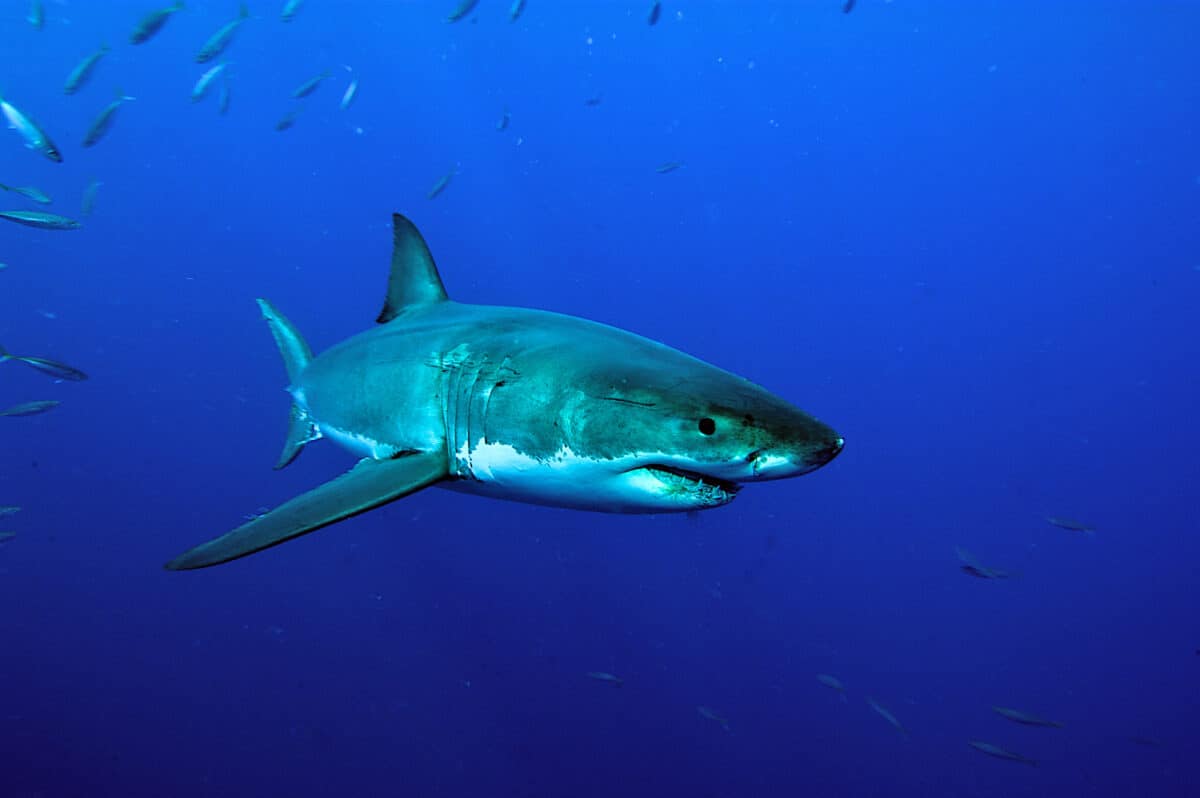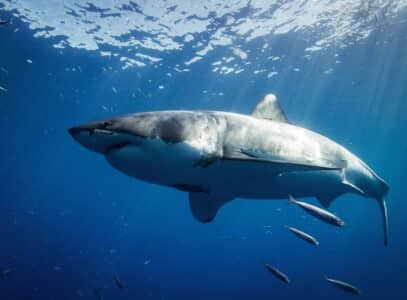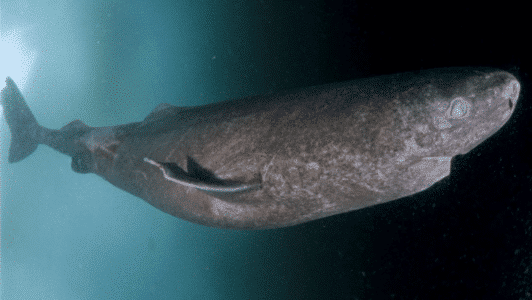If you share a love for sharks, you’ve come to the right place! Did you know that sharks are fish and not mammals? People often get confused and believe sharks are mammals because some give birth to live young, and of course because of their large size. There are over 400 species of sharks, that we know of, swimming in our oceans today.
Scientists are discovering more and more information about the crucial role sharks play in our ecosystem and the impact of threats, like long-line fishing and gill netting, on global shark populations.
As an avid scuba diver and marine biologist, I have been lucky enough to dive with several shark species throughout my life. This exposure, through experience and education, has challenged my perception of sharks, and I hope the information you find here will change yours as well. If you have any questions, leave a comment below and I will happily answer them.
Jump to any section or read the entire article on sharks.
Shark Overview
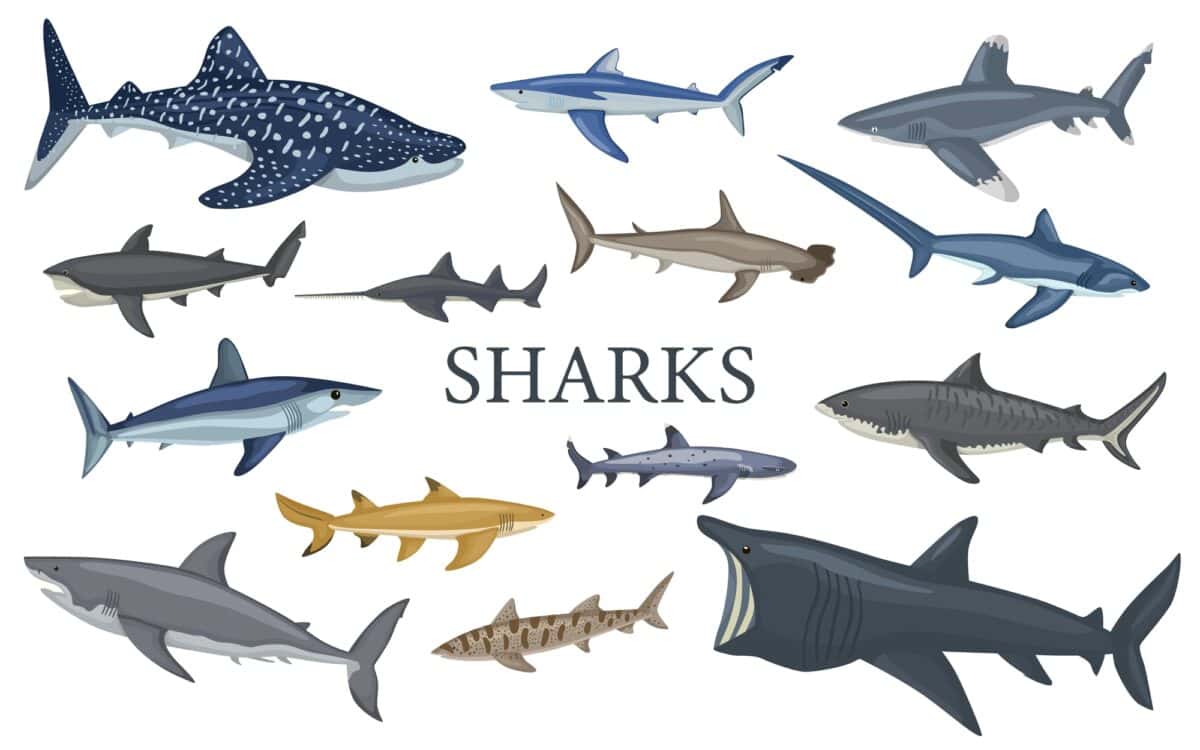
50 Types of Shark Species
- Great White Shark
- Tiger Shark
- Bull Shark
- Hammerhead Shark
- Whale Shark
- Nurse Shark
- Blacktip Shark
- Lemon Shark
- Blue Shark
- Mako Shark
- Sand Tiger Shark
- Greenland Shark
- Basking Shark
- Megamouth Shark
- Goblin Shark
- Thresher Shark
- Zebra Shark
- Angel Shark
- Cookiecutter Shark
- Wobbegong Shark
- Horn Shark
- Port Jackson Shark
- Dusky Shark
- Silvertip Shark
- Spinner Shark
- Sandbar Shark
- Caribbean Reef Shark
- Galapagos Shark
- Gray Reef Shark
- Blacktip Reef Shark
- Whitetip Reef Shark
- Scalloped Hammerhead Shark
- Smooth Hammerhead Shark
- Bonnethead Shark
- Sharpnose Shark
- Dogfish Shark
- Spiny Dogfish
- Leopard Shark
- Catshark
- Bamboo Shark
- Frilled Shark
- Sleeper Shark
- Pacific Sleeper Shark
- Smalltooth Sand Tiger Shark
- Bigeye Thresher Shark
- Pelagic Thresher Shark
- Lantern Shark
- Swell Shark
How Many Species Of Sharks Are There?
There are over 400 shark species. Sharks are part of the subclass Elasmobranchii, which include a diverse group of cartilaginous fish such as rays, skates, and sawfish. What sets sharks apart from the rest of this group is their apex predator status and advanced sensory systems.
You likely know of the large predatory sharks like the great white shark, the whale shark, and the tiger shark. However, many smaller shark species are less well known, such as cat sharks, lantern sharks, and pygmy sharks.
The Greenland shark is one of the oldest shark species, with evidence suggesting these sharks existed back when dinosaurs roamed the planet. Researchers have found a female Greenland shark thought to be between 270 and 510 years old!
Where Do Sharks Live?
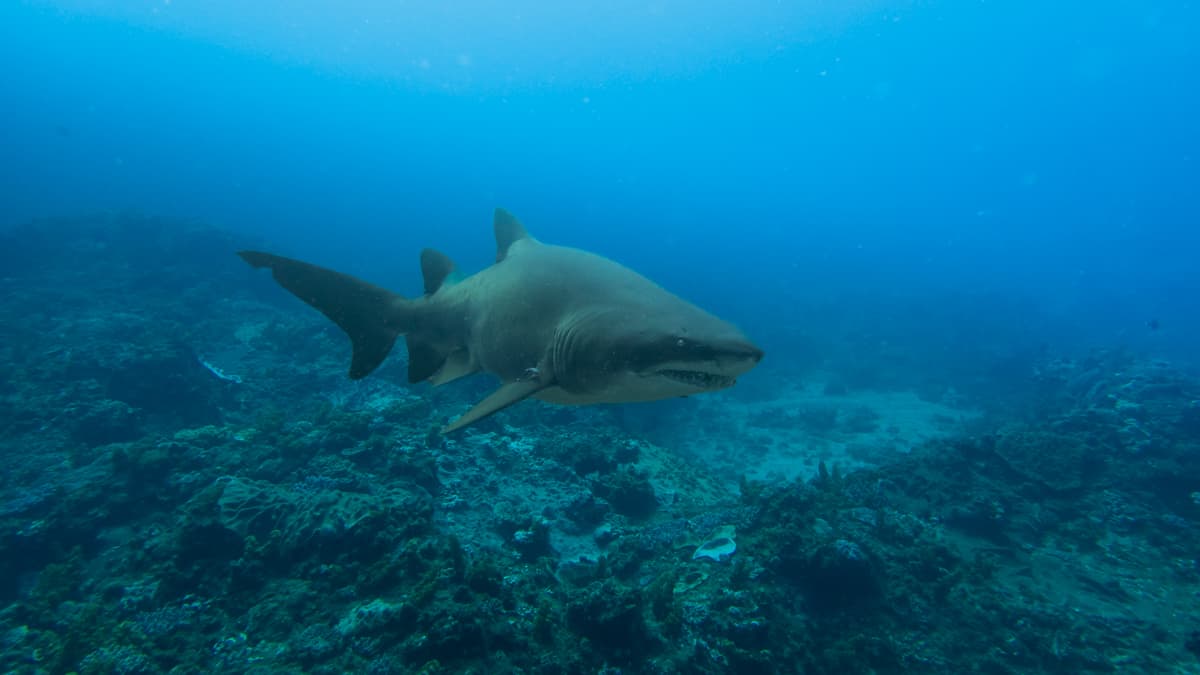
Sharks can be found all over the world, in a wide variety of environments. Some species have evolved to tolerate cold water, warm water, salty water, and freshwater differently than others. You can find sharks in:
- Deep Oceans: Home to unique sharks like goblin, frilled, and cookie-cutter sharks, this zone (1,000-2,000 meters) lacks sunlight and is extremely cold.
- Open Oceans: The pelagic zone hosts species like blue, mako, and whale sharks, thriving in the vast open waters.
- Sandy Plains: On the sea floor, saw, angel, and hammerhead sharks are adapted to life on sandy plains.
- Coral Reefs: The diverse marine life here supports sharks such as whitetip, blacktip, grey reef, and zebra sharks, showcasing reef biodiversity.
- Estuaries: Where rivers meet the ocean, species like lemon, sandbar, and bull sharks adapt to varying salinity, highlighting the unique estuarine environment.
Learn More About Sharks
-

Rare Footage of Hammerhead Sharks Swimming in Cyclones Around Ancient Volcano Emitting Strange Signals
-

60 Year Orca Grandmother Named Sofia Kills Great White Shark in Rare Video Capture
-

Largest Tiger Shark Ever Recorded
-

Baby Shark Born Through Miraculous Virgin Birth Leave Zoo Workers Dumbfounded
-

Aussie Dad Bravely Grapples with Shark to Save His Sons
-

Sharks Are Not Immune To Disease
-

All Sharks Must Keep Moving To Breathe Is A Lie
-

Killer Whale vs Great White Shark
-

10 Reasons Why Great White Sharks Are The Apex Predators of the Ocean
-

30 Beaches in the USA with the Most Shark Attacks
-

10 Best Places to Dive with Hammerhead Sharks
-

8 Sharks Responsible for Attacks in Florida
Most Popular Shark Species
| Species | Average Length (Adult) | Habitat | Diet | Conservation Status | Notable Features |
|---|---|---|---|---|---|
| Great White Shark | 14.8 – 21 ft (4.5 – 6.4 m) | Temperate coastal waters | Carnivore (seals, fish) | Vulnerable | Largest predatory fish, notable for its size, speed, and for being featured in the movie “Jaws.” |
| Whale Shark | 31.8 – 39.4 ft (9.7 – 12 m) | Tropical open waters | Filter feeder (plankton) | Endangered | Largest fish in the world, recognizable by its size and pattern of spots. |
| Hammerhead Shark | 3 – 20 ft (0.9 – 6 m; species dependent) | Tropical and warm temperate seas | Carnivore (fish, octopus) | Varied by species | Known for its unique hammer-shaped head which enhances sensory perception. |
| Tiger Shark | 10.7 – 13.9 ft (3.25 – 4.25 m) | Tropical and temperate waters | Omnivore (wide variety) | Near Threatened | Notorious for eating a wide range of prey, including other sharks, birds, and artificial objects. |
| Bull Shark | 7.4 – 11.2 ft (2.25 – 3.4 m) | Freshwater and saltwater | Carnivore (fish, dolphins) | Near Threatened | Known for its aggressive nature and ability to thrive in both salt and freshwater, including rivers and lakes. |
| Basking Shark | 19.7 – 26.2 ft (6 – 8 m) | Temperate oceans | Filter feeder (plankton) | Vulnerable | Second largest fish, known for its large mouth and peaceful nature. |
| Blacktip Reef Shark | 5.2 – 6.6 ft (1.6 – 2 m) | Tropical coral reefs | Carnivore (fish, cephalopods) | Near Threatened | Recognizable by the black tips on its fins, particularly its dorsal fin. |
| Mako Shark | 10.5 – 12.5 ft (3.2 – 3.8 m) | Open ocean | Carnivore (fish, cephalopods) | Endangered | Fastest species of shark, capable of reaching speeds of 20 mph (32 km/h) or more. |
Are Sharks A Threat To Humans?
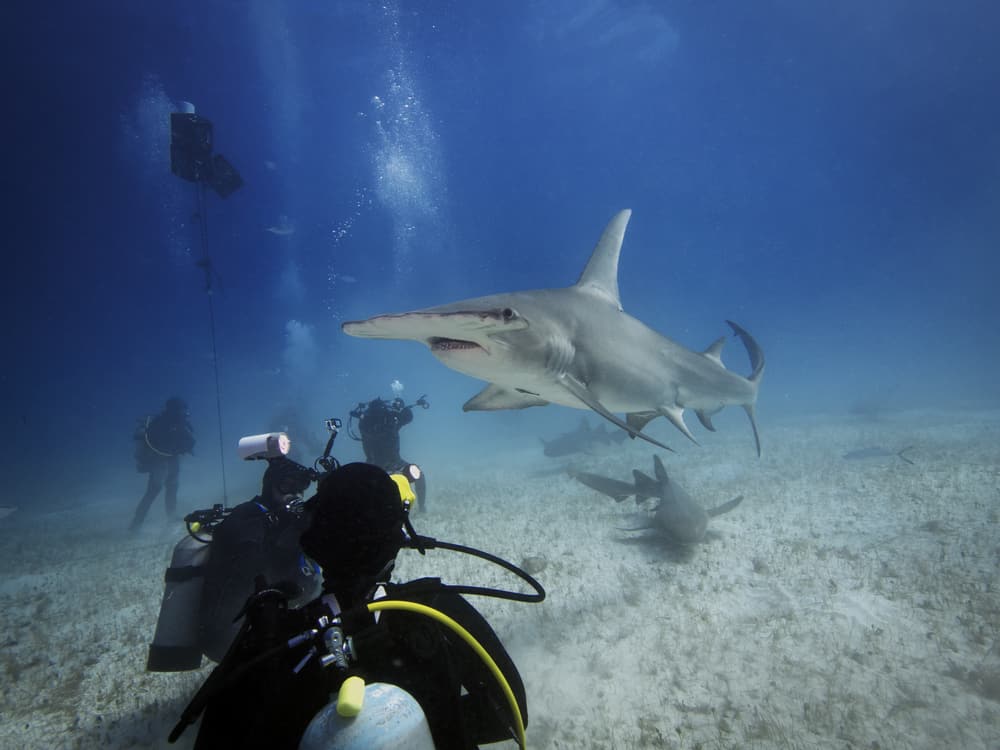
For years the media has been portraying sharks as a threat to humans. However, you are statistically more likely to be struck by lightning than to be eaten by a shark. The majority of shark species are harmless to humans, with only a few species responsible for unprovoked attacks.
Of these attacks, it is often a case of mistaken identity or plain curiosity. Most shark species are cautious around humans and do their best to avoid interacting with us. Ironically, humans pose a serious threat to sharks. Activities like long-line fishing and gill netting have a significant impact on shark populations. Despite sharks’ proven ecological role and value to marine ecosystems, human activity continues to negatively impact their numbers and, as a result, it has cascading effects on other marine life.
Shark Records
7 Facts That Surprised Me
- Sharks can go into a trance-like state when flipped upside down, known as tonic immobility.
- The whale shark can grow up to 60 feet long, equivalent to the length of two school buses.
- Some shark species can give birth to live young without mating, through a process known as parthenogenesis.
- Shark skin feels similar to sandpaper due to tiny tooth-like structures called dermal denticles.
- The cookie-cutter shark uses its suction-cup-like mouth to take circular bites out of larger animals.
- Sharks have been around for over 400 million years, making them older than trees.
- The hammerhead shark’s wide-set eyes give it a better visual range than most other sharks, allowing it to see nearly 360 degrees.
Images & Videos of Sharks
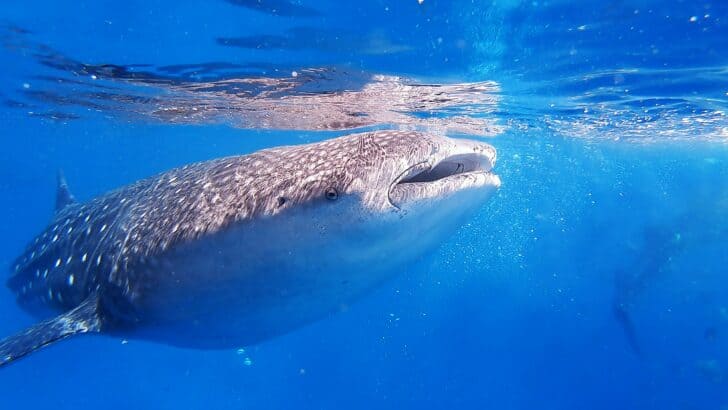
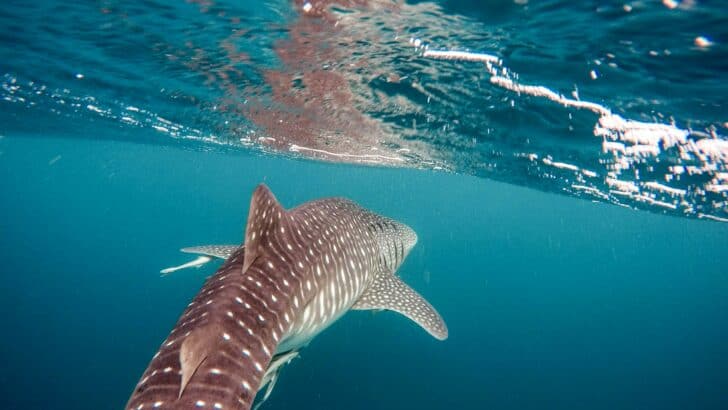
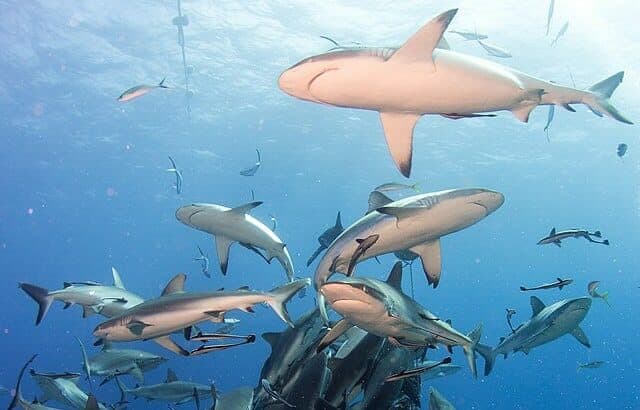
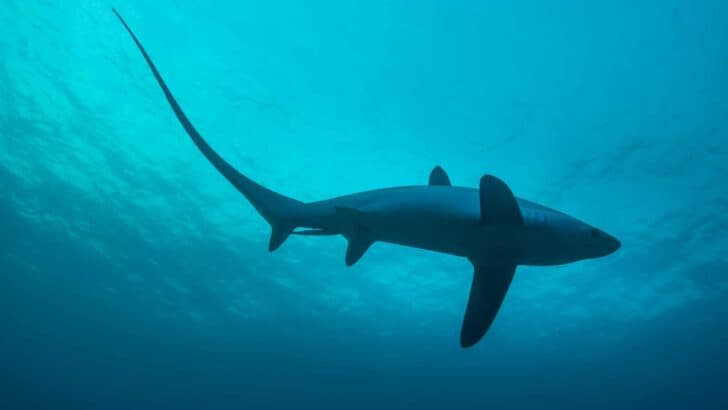

Recent Shark News
-

Spearfisherman Stable After Florida Shark Attack
-

These are The 5 Largest Great White Sharks Ever Recorded
-

Mother Captures Her 6-Year-Old Girl On Video When She Has a Terrifying Shark Encounter
-

Watch Man Pulled Overboard by Shark in Everglades
-

What Happens When Sharks Swim Towards US-Aircraft Carriers
-

Groundbreaking Shark Fossil Discovered and Finally Solves a Century-Old Mystery
-

17 Rare Sharks Some of Which You Might Not Have Heard of Before
-

Massive Hammerhead Shark Circles 2 Paddle Boarders off the Coast of Florida
-

Tagged 883-Pound Great White Shark Named Freya Approaches Massachusetts
-

Shark Silently Approaches Unaware Swimmers
-

The Sharks That Happily Swim in North Carolina
-

Shocking Footage of Orcas Killing a Great White Shark
Shark FAQs
No, not all sharks pose a danger to humans. Out of the over 400 shark species, only a handful of species have been involved in human attacks. Most sharks have no interest in humans, making unpleasant incidents rare.
Sharks’ diet consists of a variety of prey, including fish, crustaceans, mollusks, plankton, marine mammals, and sometimes even other sharks. Their diets are species-dependent, for example, the Great White Shark feeds on marine mammals like seals, while the Whale Shark prefers to feed on plankton through filter-feeding.
If you want to reduce the risk of a shark attack, avoid swimming in areas where sharks have a known presence or areas with fishing activities. You can also avoid swimming at dawn and dusk, as sharks are most active during these times, and go swimming in groups and remove shiny jewelry.
Sharks have an incredible sense of smell and can detect small amounts of blood from certain distances to locate injured prey, but they cannot smell a single drop of blood from miles away. This is an exaggeration people have come to believe is true.
Shark attacks on humans are very rare and not a sign of predatory behavior towards humans. Most recorded attacks on humans are likely due to mistaken identity. Where the shark confused humans with its usual prey. This is especially true in cases where surfers were attacked, as they could easily be mistaken for sea lions from below.
Shark Finning
Shark finning is a violent practice where sharks are caught, their fins chopped off, and what remains of them, often still alive, thrown back to sea to die. This process is driven by the high demand for shark fins used in shark fin soup – a luxury dish in some cultures. Shark finning significantly contributes to the decline of shark populations around the world, negatively impacting marine ecosystems. These apex predators regulate other marine life populations to ensure a balanced ecosystem. Overpopulation of prey species due to reduced shark numbers negatively affects coral reefs and the health of marine environments.
Sharks are extremely vulnerable to overexploitation, as they have slow-growing, maturing, and reproduction rates. The decrease in shark populations disrupts marine ecosystems and impacts local economies dependent on marine biodiversity for tourism and sustainable fishing. Although CITES and national bans on shark finning are a step in the right direction when it comes to this issue, enforcement stays challenging.
Latest News On Shark Conservation
- Scientific Research and Sustainable Management: Scientists are actively researching shark behaviors, habitats, and populations. Organizations, like NOAA Fisheries, are managing shark fisheries to prevent overfishing and rebuild overfished areas. They are implementing sustainable practices, including shark number assessments and regulations, to ensure shark conservation on a national and international level.
- Public Engagement and Awareness: Organizations such as The Shark Trust raise public awareness of the role sharks play in ecosystems, advocating for improved fisheries management and legislation to ensure sharks’ safety. They aim to change the public’s attitude and to support sustainable shark tourism by highlighting the economic benefits of living sharks.
- Education, Empowerment, and Advocacy: Shark Angels focuses on changing the public’s perception of sharks through education, youth empowerment, and positive media. They do this through educational presentations and supporting shark scientists’ research. They advocate for stronger laws protecting sharks, encourage locals to take action, and engage volunteers globally through conservation programs.
My Experience With Sharks
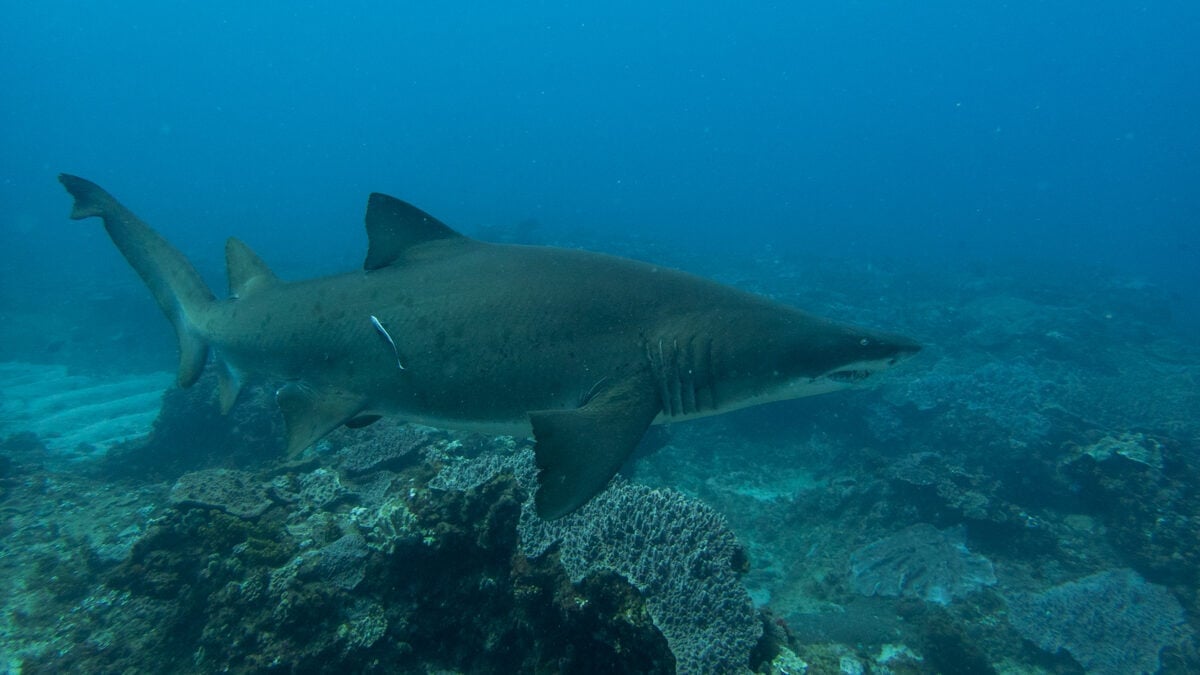
I find it hard to recall the first time I dived with a shark. It might have been in South Africa, diving with cute-looking shy sharks, or perhaps in Borneo with some reef sharks. But, regardless of when that was, I’ve been lucky enough from that day to swim with many beautiful shark species, including ragged-tooth sharks, leopard catsharks, and even the rare bull shark.
I remember as a teenager being blissfully unaware of how sharks were portrayed in the media. Never feeling uneasy, or tense around them. It was only when I got older and became more susceptible to the influence of media, that my nerves would flare at the thought of diving with larger sharks. Even as a marine biologist, I sometimes struggle to shake the narratives portrayed of sharks. But, nowadays I find a great deal of joy in helping others change their perception of sharks and to help them understand sharks’ importance in the ecosystem. I hope the information you find here challenges your perceptions too! If you have any questions, please let me know in the comments below.
Newest Category: Sharks
- Surprise Hippo Attack on Three Lions - July 21, 2024
- USA’s Best Wildlife Conservation Success Stories - July 14, 2024
- The Incredible Bird with Sunflower Eyes - July 13, 2024

